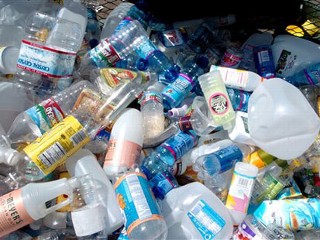 By SARAH KARUSH, Associated Press Writer
By SARAH KARUSH, Associated Press Writer
WASHINGTON - Alice and Jeff Speck didn't have a car and didn't want one. But District of Columbia zoning regulations required them to carve out a place to park one at the house they were building.
It would have eaten up precious space on their odd-shaped lot and marred the aesthetics of their neighborhood, dominated by historic row houses. The Specks succeeded in getting a waiver, even though it took nine months.
Like nearly all U.S. cities, D.C. has requirements for off-street parking. Whenever anything new is built — be it a single-family home, an apartment building, a store or a doctor's office — a minimum number of parking spaces must be included. The spots at the curb don't count: These must be in a garage, a surface lot or a driveway.
D.C. is now considering scrapping those requirements — part of a growing national trend. Officials hope that offering the freedom to forgo parking will lead to denser, more walkable, transit-friendly development.
Opponents say making parking more scarce will only make the city less hospitable. Commuters like Randy Michael of Catharpin, Va., complain they are already forced to circle for hours in some neighborhoods.
"Today I had an 11:30 meeting and I had to plan an extra hour just to park" said Michael, 49. It ended up taking him 40 minutes to find a metered spot.
Advocates counter that parking is about more than drivers' convenience; it can profoundly affect the look and feel of a city.
"Do you want to look like San Francisco or Los Angeles?" asked Donald Shoup, an urban planning professor at UCLA and author of "The High Cost of Free Parking." "New York or Phoenix?" (Shoup prefers San Francisco and New York — hard to park in but highly walkable.)
Parking requirements — known to planners as "parking minimums" — have been around since the 1950s. The theory is that if buildings don't provide their own parking, too many drivers will try to park on neighborhood streets.
In practice, critics say, the requirements create an excess supply of parking, making it artificially cheap. That, the argument goes, encourages unnecessary driving and makes congestion worse. The standards also encourage people to build unsightly surface lots and garages instead of inviting storefronts and residential facades, they say. Walkers must dodge cars pulling in and out of driveways, and curb cuts eat up space that could otherwise be used for trees.
"Half the great buildings in America's great cities would not be legal to build today under current land use codes," said Jeff Speck, a planning consultant. "Every house on my block is illegal by current standards, particularly parking standards."
Opponents also say the standards force developers to devote valuable land to parking, making housing more expensive.
Milwaukee, one of a small group of cities that has eased minimum parking requirements, did so because they were impeding redevelopment of struggling neighborhoods, said John Norquist, the city's mayor from 1988 to 2004.
Norquist, who today heads the Chicago-based Congress for the New Urbanism, described a lot that sat vacant for decades after a historic building burned down. The required parking made it unfeasible to build anything new there, he said. After officials relaxed the parking requirement, a thriving restaurant sprang up.
Some cities have switched directions altogether, replacing the minimum requirement with a cap on the maximum allowable number of parking spaces. London and San Francisco began making the shift decades ago. San Francisco is currently considering extending the new approach to more neighborhoods.
Activists say too much parking is required even in New York City, particularly outside Manhattan. In August, a coalition of environmental groups said existing parking minimums would boost traffic and cancel out much of the expected improvements from the city's green initiatives.
The D.C. proposal would eliminate minimum parking requirements with some exceptions. Caps on parking would also be established.
In old D.C. neighborhoods like Capitol Hill and Georgetown, where parking is scarce, opponents of the change fear that if new homes don't provide off-street spots, competition for on-street parking will worsen.
Ken Jarboe, a neighborhood leader from Capitol Hill, said the way to reduce traffic is to continue improving the transit system and to create incentives for people not to drive.
"Simply saying, 'Let's make it more painful to park — it doesn't get you where you want to be," Jarboe said.
But Harriet Tregoning, director of the D.C. Planning Department, said the city is already easy to navigate without a car. Nine out of 10 residents live within a quarter-mile of transit, and, according to census data, 12 percent of Washingtonians walk to work, Tregoning noted. More than a third of D.C. households don't have a car.
The Specks say they haven't regretted their decision to go car-free even after the birth of their son, Milo, in June. They walk to shops and parks in their neighborhood, and the baby's pediatrician is a short bus ride away. When needed, they can rent vehicles from Zipcar, a car-sharing service.
Adding a garage and a driveway to their house would have forced them to sacrifice the equivalent of a bedroom and their garden. They decided it was worth spending the time to get a variance, especially since they were applying for several other zoning waivers at the same time.
For a developer, however, seeking a variance may not be an option.
"If you're working off borrowed money, you're not going to wait nine months," Jeff Speck said.
As a result, developers of some recent D.C. projects have ended up with more parking than actually gets used, Tregoning said.
"We're forcing people to invest in spaces for automobiles rather than in spaces for people," she said. "There's no way to recover that use."
Original here














